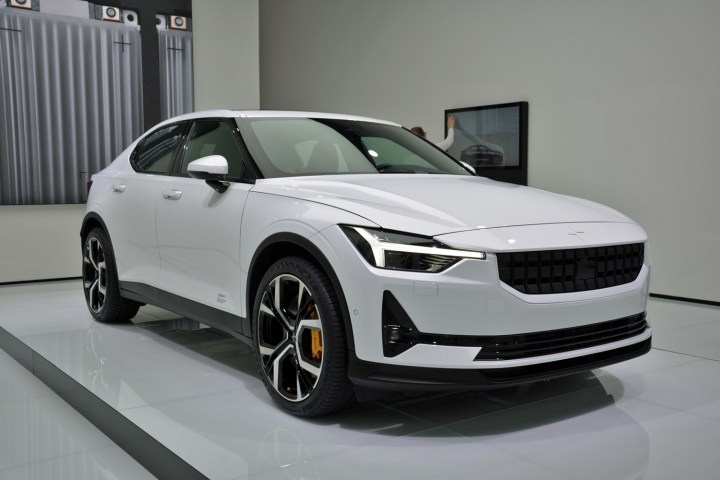
Volvo sister company Polestar is quietly building a lineup of performance-oriented, high-tech cars that run on electricity. The company unveiled the 1, its flagship model, in 2017. It presented the 2, its second car, during the 2019 Geneva Auto Show. It’s already looking ahead to the launch of a third model that it will call — you guessed it — 3. Chief operating officer Jonathan Goodman shed insight into what 3 will mean in Polestar-speak.
“We’ve produced the two bookends. You’ve already got the top end and the bottom end, and all of the Polestar models that we launch thereafter will be positioned in between those two. The one that comes after the Polestar 2 is the Polestar 3. It’s a coupe-style SUV, and we will release it in the back end of 2021,” Goodman told Digital Trends on the sidelines of the Geneva show.
He added Polestar will gradually expand its portfolio of models during the 2020s. His team won’t go below the 2, which will compete in the same segment as the Tesla Model 3, and it won’t venture above the 1, which is a halo car priced in the vicinity of $150,000. The firm wants to remain on the premium side of the market without venturing into the grotesquely expensive end of the spectrum.
While Goodman stopped short of revealing additional details about the 3, he confirmed that it will be powered only by electricity. The aforementioned 1 is powered by a plug-in hybrid powertrain, but it’s the exception to the rule. Starting with the 2 (pictured), every car Polestar releases will be all-electric, all the time. We’ll have to wait patiently to find out what else Polestar has in store. If the 3 is a coupe-style SUV, however, there’s a good chance one of its upcoming models will arrive as a more family-oriented SUV with a boxier roof line.
There is one thing we know about future additions to the Polestar lineup: They will continue to use the company’s simple naming structure. Expect to see a Polestar 4, a Polestar 5, and so on. It’s not the most creative way to name a car, but Goodman explains it’s an approach that perfectly falls in line with the company’s values.
“It’s a case of ‘let’s try to strip out some of the complexity.’ It’s quite simple for someone to understand. They don’t have to worry about whether it’s an M this or a B that. It’s gloriously simple. It’s a good fit with the brand. We’re trying to strip out the unnecessary,” he explained to Digital Trends.



